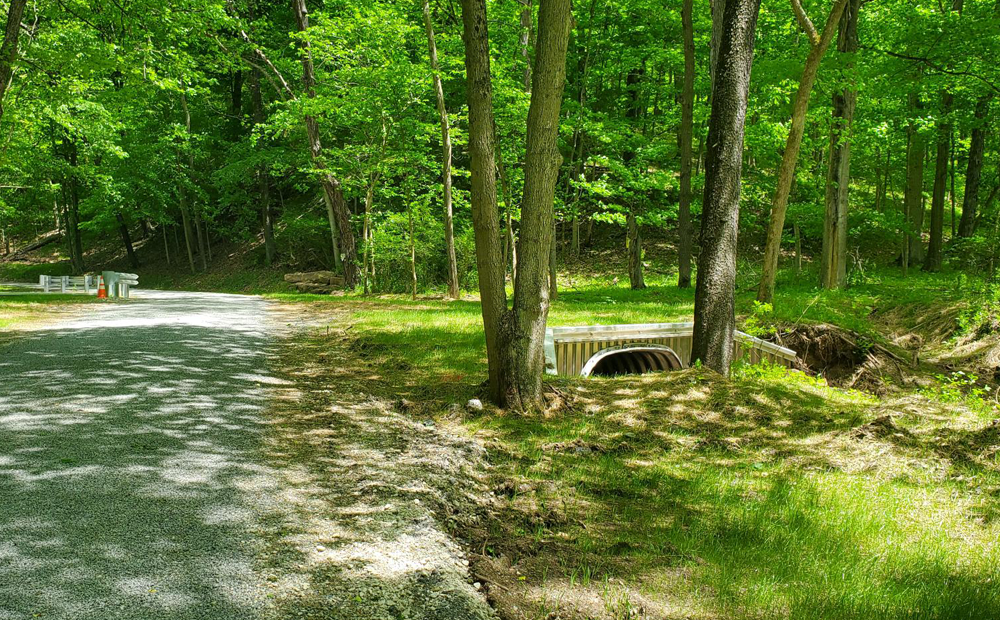Benefits of Landscaping With Native Plants
From construction sites to backyards, native plants are an effective and low-maintenance way to increase biodiversity, reduce stormwater and improve the environment.
Native plants are discussed more and more, but why? Native plants are the backbone of a larger and more diverse ecological community. Unlike yard grass and nonnative plants, native plants evolved specifically for local wildlife in the area. They provide higher nutrient pollen sources and are often the preferred host to many pollinators.
A Balanced Food Supply for Pollinators
One or two invasive plants often take over a large area, limiting pollinators’ food access to specific times when these few plants are in bloom. In contrast, native plants have co-evolved with each other, so competition among them is more balanced. Areas with native plants can support a much larger variety of species with varied growth timelines, allowing pollinators and songbirds to have food for longer periods of the year.
With a great number of butterflies, bees, beetles, hummingbirds and songbirds supported by native plant communities, birds, foxes, weasels, and other animals that prey on these species are more abundant as well. Native plants can truly change a whole ecosystem!
Photo: ACCD planted two native meadows at Boyce Park to reduce stormwater runoff, increase infiltration, capture sediment and provide plant species for pollinators.
Native Plants in Land Development
In addition to benefiting pollinators, using native plants is a cost-effective way to improve stormwater management on construction sites.
A Low-Cost, Low-Maintenance Solution
Because these plants evolved to thrive in western Pennsylvania, typical costs, such as fertilizer and lime, are not needed. Native plants can grow in dry, drought-prone soils with a pH of around 5.5. Unlike large swaths of grass, native plants do not require constant mowing, saving companies money on maintenance.
Manage Stormwater with Native Plants
Another reason to plant native? These plants often have deeper roots than nonnatives usually planted on construction sites, stabilizing soil, soaking up rainwater and easing burdens on the site’s stormwater management facilities.
Allegheny County Conservation District’s newly launched fee calculator provides financial credits to submitted NPDES permits that maximize non-structural credits to mitigate 25% of the 2-year 24-hour storm volume increase. Non-structural Best Management Practices (BMPs) often require either protecting natural areas already on the development site or re-vegetating an area with native plants to create new native community. Contact ACCD for more information on the non-structural permit credit.
.png)
Photo: ACCD permitted this stormwater retention project at Wightman Park in Squirrel Hill. The site, which previously had issues with flooding, utilized native plants in rain gardens as part of stormwater management.
Planting Tips for Development Projects
Learn more from the Pennsylvania Bureau of Forestry Planting and Seeding Guidelines.
Preparation is Key
Make sure you choose a native seed mix with both warm-season and cool-season growing species to extend the growing season of your site. Think about the environmental conditions and management objectives of the area when choosing your species. Native seed suppliers often have the most stock from December to March and be sure to specify PLS (pure live seed) when ordering.
Once the site is clear of vegetation, disk the site to a depth of 8 inches to break up the mineral soil. Lime and fertilizer are not typically needed but you should test the soil to ensure the right growing conditions. The soil test should show calcium to aluminum ratios above 1 and pH between 5.0 - 5.5. If fertilizer is used, make sure to reduce the nitrogen content so that it does not kill the native seeds and promote weeds.
Time to Plant
Work seeds lightly into site with a rake or specialized seeders (for larger sites) without burying seeds too deeply. Cover the seeds with straw instead of hay so that weeds are not introduced. Native plants take longer to establish so temporary cover crops should always be used to stabilize the soil and prevent nonnative plants from invading the site. Spring oats (before August 15th) or winter rye (after August 15th) are the recommended cover crops for native seed mixes. Your native plant community should establish soon, impressing passersby with beautiful blooms all season long.
Homeowner Tips
To make your garden or yard bloom with native plants this season, follow these planting tips from a local native plant expert, co-owner of Phyto Bello.
Consider Your Space
-
Think about your grass lawn area. Do parts of your yard never see the soles of your feet? This “unused” space could be the perfect spot for native plants. Less mowing, more growing!
-
Consider your existing landscape. Have you neglected large open flower beds or smaller areas? These spots can be the perfect place for native plants. Start small and work your way up!
Buy Native Seeds or Plants
Allegheny County has many options for buying native seeds and plants.
-
With helpful guides and the largest selection of native seeds in the eastern US, Ernst Seeds Meadville, Pennsylvania, is a great place for native seeds.
-
Local nurseries like Arcadia Natives in Washington provide potted native plants, and Beechwood Farms Plant Nursery in Fox Chapel sells both potted nursery plants and smaller native seed packets.
Watch Your Community Grow
Because native plants adapted to grow in this area, they do not require much maintenance to thrive. Plant in the spring or fall and aim to plant before a rainstorm. Remember to water your native plants throughout the first year or two during long dry spells. Happy planting!
